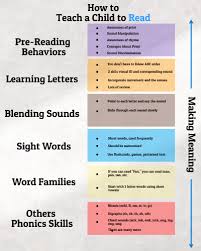Teaching Reading: Strategies for Success
Reading is a fundamental skill that opens doors to knowledge, imagination, and lifelong learning. As educators, it is crucial to equip students with the tools and strategies they need to become proficient readers. Here are some effective approaches to teaching reading:
Phonics Instruction
Phonics instruction involves teaching students the relationship between letters and sounds. By mastering phonics rules, students can decode words accurately and improve their reading fluency.
Vocabulary Development
Building a strong vocabulary is essential for comprehension. Encourage students to learn new words through context clues, word roots, and regular exposure to a variety of texts.
Comprehension Strategies
Teach students how to use comprehension strategies such as predicting, visualising, questioning, and summarising to enhance their understanding of texts.
Reading Aloud
Reading aloud to students helps develop their listening skills, expands their vocabulary, and fosters a love for reading. Encourage students to read aloud in class as well.
Independent Reading
Provide opportunities for independent reading where students can choose books that interest them. This promotes a love for reading and allows students to practice their skills at their own pace.
Differentiated Instruction
Acknowledge that each student has unique learning needs and preferences. Differentiate instruction by providing varied reading materials, activities, and support based on individual abilities.
In conclusion, teaching reading requires a multifaceted approach that addresses phonics, vocabulary, comprehension, fluency, and engagement. By implementing these strategies effectively, educators can empower students to become confident readers who are equipped for success in academics and beyond.
Essential FAQs on Effective Methods for Teaching Reading in English
- How to teach English reading?
- What is the method of teaching reading?
- What is the best way to teach reading?
- What are the 5 components of teaching reading?
How to teach English reading?
When it comes to teaching English reading, it is essential to employ a comprehensive approach that encompasses various strategies and techniques. Incorporating phonics instruction, vocabulary development, comprehension strategies, and engaging reading activities are key components of effective English reading instruction. By creating a supportive learning environment that encourages practice, exploration, and individualised attention, educators can help students develop their reading skills and foster a lifelong love for English literature. Through structured lessons, interactive exercises, and meaningful feedback, teachers can guide students on their journey to becoming proficient readers in the English language.
What is the method of teaching reading?
When it comes to the method of teaching reading, there are various approaches that educators can employ to help students develop this essential skill. One common method is phonics instruction, which focuses on teaching the relationship between letters and sounds to improve decoding abilities. Another approach is whole language instruction, which emphasises meaning-making and context to enhance comprehension. Additionally, balanced literacy combines elements of both phonics and whole language approaches to provide a comprehensive reading education. Ultimately, the most effective method of teaching reading may vary depending on individual student needs and learning styles, highlighting the importance of employing a flexible and adaptive approach in the classroom.
What is the best way to teach reading?
When it comes to the frequently asked question, “What is the best way to teach reading?” there is no one-size-fits-all answer. The best way to teach reading varies depending on individual learning styles, preferences, and needs. However, some effective strategies include incorporating phonics instruction to build foundational skills, fostering vocabulary development for better comprehension, implementing comprehension strategies to enhance understanding, promoting reading aloud for fluency and engagement, encouraging independent reading for practice and enjoyment, and providing differentiated instruction to cater to diverse learning abilities. By combining these approaches thoughtfully and flexibly, educators can create a comprehensive reading programme that supports students in becoming proficient readers.
What are the 5 components of teaching reading?
A frequently asked question in the realm of teaching reading is: “What are the 5 components of teaching reading?” The answer to this question lies in understanding the essential elements that contribute to successful reading instruction. These components, known as phonemic awareness, phonics, fluency, vocabulary, and comprehension, form the foundation of effective reading pedagogy. By addressing each of these components systematically and comprehensively, educators can help students develop strong literacy skills and become proficient readers who can navigate a variety of texts with confidence and understanding.

Leave a Reply